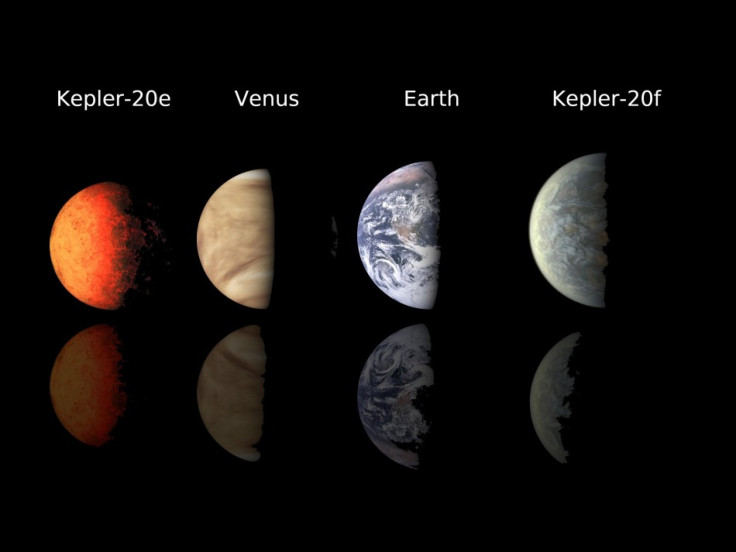First Earth-sized Planet Identified, Astronomers Announce

Astronomers announced the first Earth-sized planet orbiting a sun-like star outside of the solar system Tuesday, a major milestone in finding potential spots for extraterrestrial life and ushering in a new era of astronomy.
Researchers said Tuesday that the planet, named Kepler-20F, with a radius only 3 percent larger than the Earth, was found in a five-planet solar system that challenges models of how planets form.
The researchers also identified another planet, Kepler-20e, 0.87 times the Earth's radius. However, scientists said it was highly unlikely that either planet would be hospitable since they were located so close to their star and had orbits of 6.1 days (Kepler-20e) and 19.6 days (Kepler-20f).
The era of exoEarths began on Dec. 20, 2012, Francois Fressin, lead author and researcher at the Harvard-Smithsonian Center for Astrophysics, said. The study included observations from space and confirmation from Earth telescopes in a team of nearly 30 scientists, researchers said.
The planets' names reflected the Kepler mission, a $591 million telescope administered through NASA's Jet Propulsion Laboratory in Pasadena, Calif. that keeps watch over nearly 200,000 in the hunt for planets outside the solar system. As of 2009, the Kepler mission has found 2,326 planets, according to officials.
For the first time, Earth-sized planets are known to exist, said Nick Gautier, Kepler project scientist.
Scientists described the two planets as being some of the smallest detected by available technology, but expect new tools to be able to detect the planets' masses and even detect nearby moons in the future.
The alien solar system contained five planets that challenged current theories of how planets form. The architecture of that planet system is crazy, said David Charbonneau, astronomy professor at Harvard University, who was involved in the study.
The journal Nature published the research on the two Earth-like planets Tuesday; the other three planets will be highlighted in the Astrophysical Journal.
After the formation of a sun, planets form out of the disk of material left over, a mix of rock close to the star and gas further away.
As material condenses to form planets, smaller rocky planets tend to form closer to the star and larger gaseous planets tend to form on the outer part of the solar system.
However, the Kepler-20 solar system has planets that alternate between rocky and gaseous planets, challenging current models of planet formation.
In the Kepler-20 system, rocky planets and gas giants happily mingle together and this is the first time we've seen this, Charbonneau said.
This solar system causes problems with all our favorite ways of thinking about how planets are formed, said Linda Elkins-Tanton, director of terrestrial magnetism at the Carnegie Institution for Science. Elkins-Tanton was uninvolved in the study.
Kepler scientists use the transit method to detect planets. As a planet orbits a star, it dims the star, a phenomenon that astronomers can detect with telescopes.
On Dec. 5, Kepler astronomers announced the first planet, Kepler-22b, that exists in the habitable zone that likely supports water, needed for life. However, Kepler-22b is 2.4 times the Earth and is less dense than Earth, researchers said.
So far, astronomers found these planets through theoretical measurements, unable to detect the planet masses, but they expect this to change as technologies advance.
The hunt is on to find a planet that finds the best of both of these worlds, an Earth twin, Charbonneau said.
The researchers said that the planets take months to find and verify. Kepler-20f took a year to find, the researchers said, because of its small size compared with other identified planets.
There is a possibility of (an Earth-twin) showing up in the next couple of years, but we may have to wait for a while longer, Gautier said.
Fressin was more optimistic and said he expected an Earth-like planet in a habitable zone would be uncovered in 2012. He should know since he was at the helm of the current research.
I haven't slept in, like, six months, Fressin said.
© Copyright IBTimes 2025. All rights reserved.





















